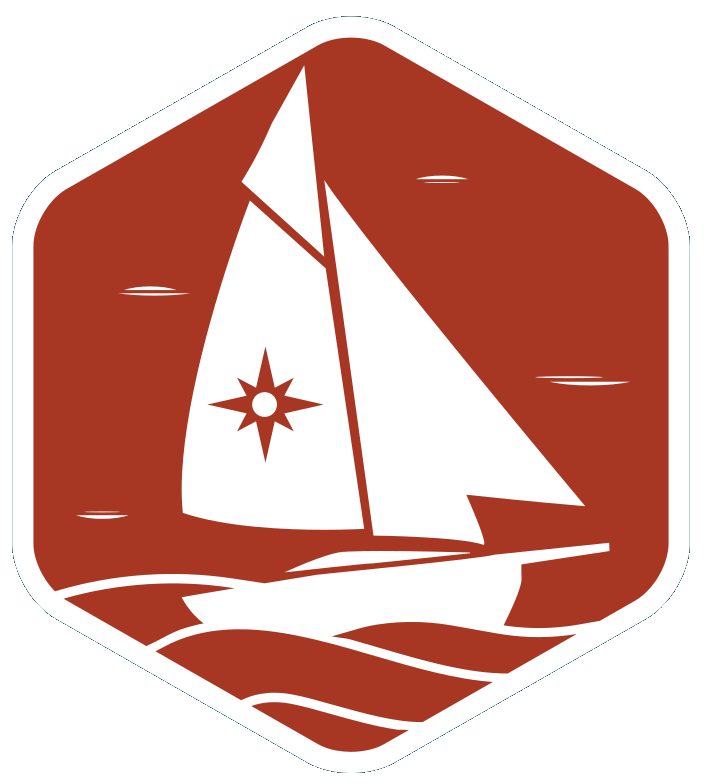2017 Festival Boats
Boats are listed in alphabetical order.
See boats from other years | See this year’s boats
-

Year Built:
1977Owner:
Mike FergusonDesigner:
Jim StanleyDesign:
DoryType:
PowerA Northwest 26ft lapstrake dory. Constructed from all mahogany and teak Totally restored. -
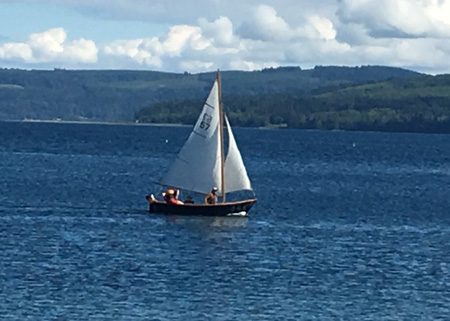
Year Built:
UnknownOwner:
Michael MoenigDesigner:
Bill GardenDesign:
Port Madison PramType:
SloopThis boat has been in the family for decades. It sailed the waters of Lake Washington for decades, being owned by an infamous Boeing aircraft... -
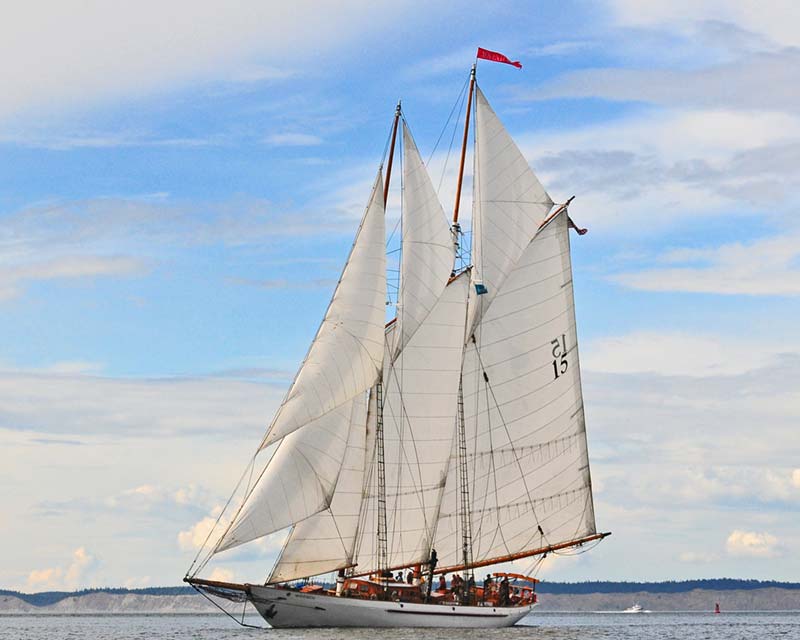
Year Built:
1913Owner:
Schooner Adventuress Sound ExperienceDesigner:
B.B. CrowninshieldDesign:
One-offType:
SchoonerSound Experience sails the historic schooner Adventuress to educate, inspire, and empower an inclusive community that works to improve our marine environment and celebrates our... -
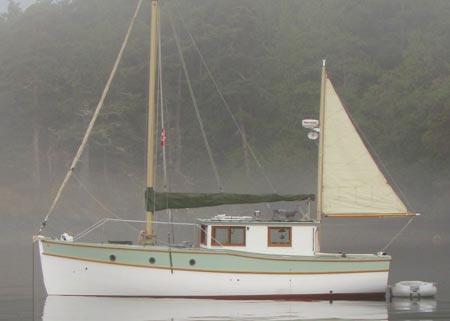
Year Built:
2008Owner:
Capt. Peter WilcoxDesigner:
Carl Chamberlain w/Capt. WilcoxDesign:
Wilcox 36Type:
MotorsailerAma Natura is a 36’ custom petroleum-free gaff motorsailer built by the NW School of Wooden Boatbuilding, and designed and used each year for Inside... -
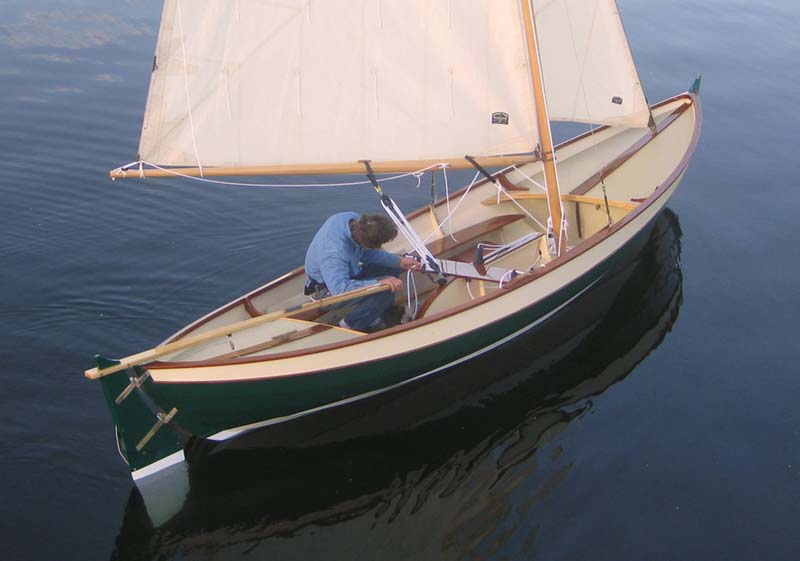
Year Built:
2014Owner:
David BergeyDesigner:
Iain OughtredDesign:
Arctic TernType:
SloopThis is a stretched version of Iain Oughtred’s Arctic Tern. This quick and maneuverable boat is a six strake round-bilge hull, giving it the appearance... -
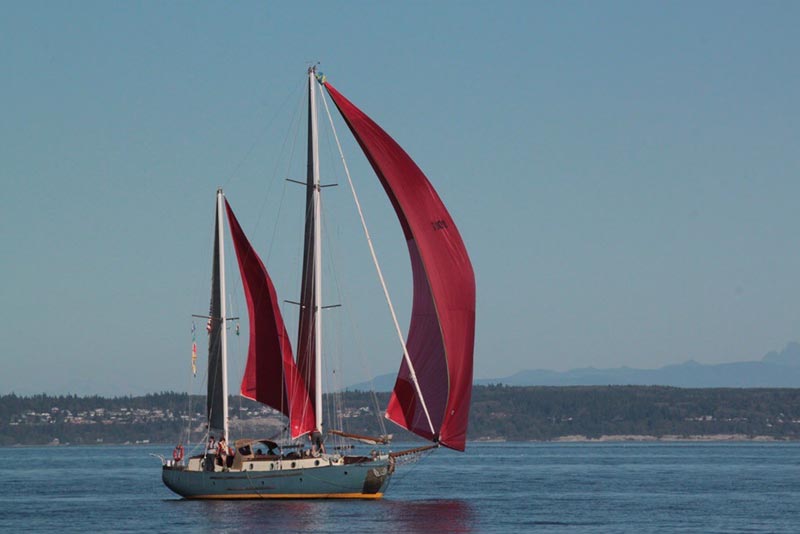
Year Built:
1972Owner:
Christine Scoggins GranquistDesigner:
Fred PetersonDesign:
One-offType:
KetchAriel of Victoria was built outside of Nanaimo on Vancouver Island from 1972 to 1980 by Ron Hunt and Fred Peterson at Fred Peterson’s yard.... -
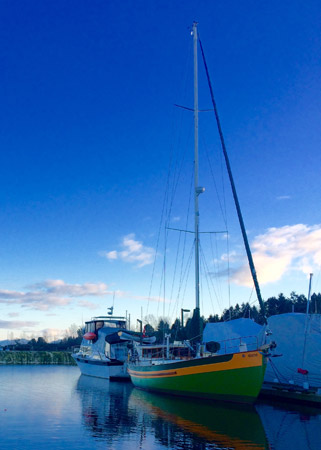
Year Built:
2001-2014Owner:
James & Debbie GawiukDesigner:
Paul GartsideDesign:
One-offType:
SloopThe year 1998; we consulted with Paul Gartside and had several preliminary drawings produced. By 2000 we had the finalized plans and commenced building our... -
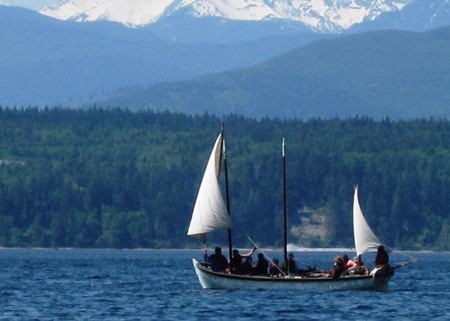
Year Built:
2002Owner:
Northwest Maritime CenterDesigner:
Greg FosterDesign:
LongboatType:
RowCommissioned by the Wooden Boat Foundation, Bear was built in partnership with Gray Wolf Ranch and the NW School of Wooden Boatbuilding. Greg Foster designed... -
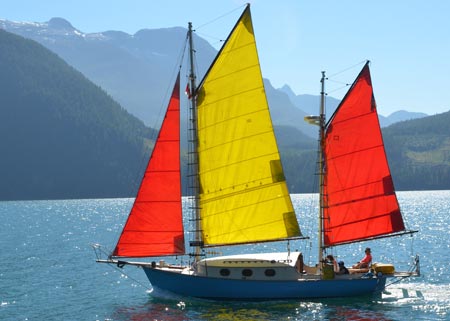
Year Built:
1955Owner:
Douglas MacLachlanDesigner:
Christian Noorgaard & Basil KnauthDesign:
One-offType:
KetchBimi is a custom gaff-ketch sailboat that has been in our family for over 60 years. She was designed by Basil Knauth & Christian Norgaard,... -
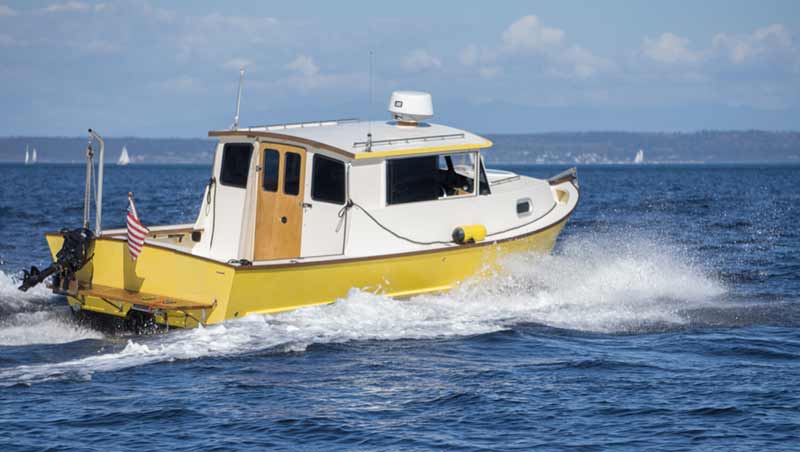
Year Built:
2006Owner:
Ray Brown and Anne ThompsonDesigner:
Renn TolmanDesign:
Tolman Alaskan Skiff Jumbo 24Type:
PowerBright Star is from a design by Renn Tolman of Homer, Alaska. The Alaskan Skiffs were meant for rough waters, and have been customized to... -
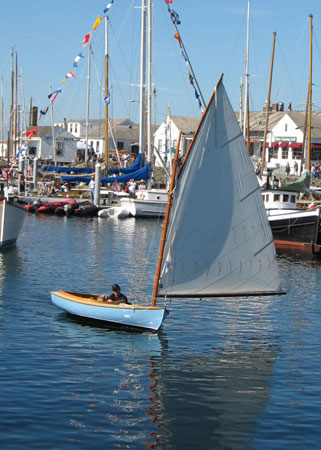
Year Built:
1975LOA:
33' 0"Beam:
9' 6"Owner:
Ryan WalshDesigner:
John BeetleDesign:
Beetle CatType:
Sloop -
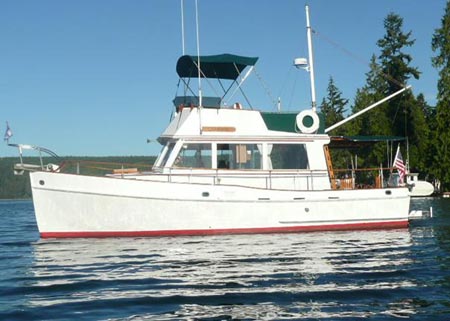
Year Built:
1972Owner:
Joseph GuillienDesigner:
UnknownDesign:
Grand Banks 32Type:
PowerSometimes you pick the boat, and sometimes the boat picks you. Port Ludlow resident Joseph Guillien showed up to look at a wooden boat and... -
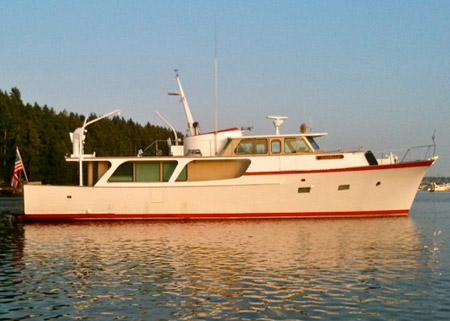
Year Built:
1961Owner:
Mel FlavelDesigner:
William GardenDesign:
One-offType:
PowerWell laid out custom built cruising yacht for a family of 4 and crew of 2. Alaska yellow cedar over oak frames on 10 inch... -

Year Built:
2015Owner:
Graham ByrnesDesigner:
B&B Yacht DesignsDesign:
Core Sound 17 mk3Type:
Cat ketchCarlita is a Core Sound 17 Mark 3 Cat ketch designed by Graham Byrnes of B& B Yacht Designs. She is built from a plywood... -
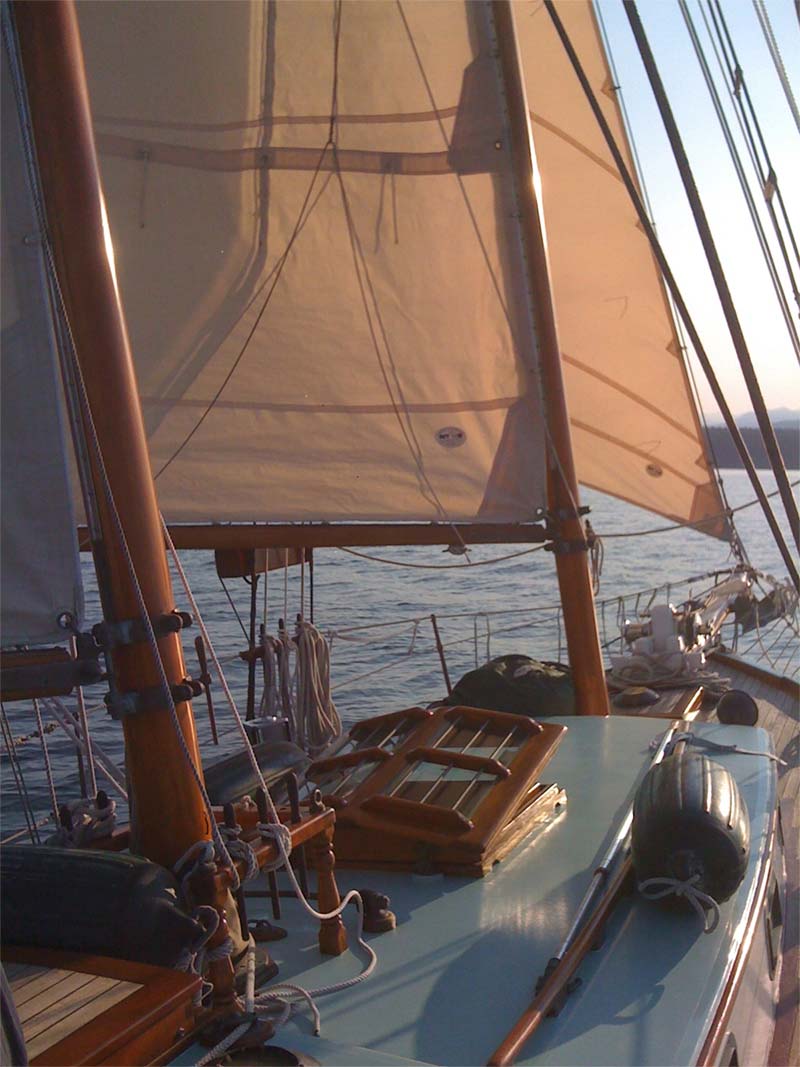
Year Built:
1994Owner:
Matt and Stephanie McClearyDesigner:
AtkinsDesign:
Maid of KentType:
SchoonerCeridwen was lofted in the fall of 1982 at Magner and Sons Boatworks by John and Kevin Magner and Matt McCleary. Matt continued on with... -
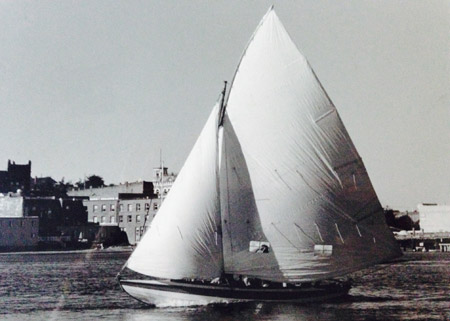
Year Built:
1986Owner:
David SmithDesigner:
Charles MowerDesign:
Massachusetts racing dory or x-doryType:
SloopChesuki’s design is in “The Dory Book” by John Gardner, from which I traditionally built her of fragrant Port Orford cedar and Oregon white oak.... -

Year Built:
1936Owner:
Sean and Inger RankinsDesigner:
M.S.J.HansenDesign:
Danish 38M2 SpidsgatterType:
SloopBuilt by J. Wass for himself and his growing family. He was a professional shipwright and Cito was not his first Spidsgatter that he built... -
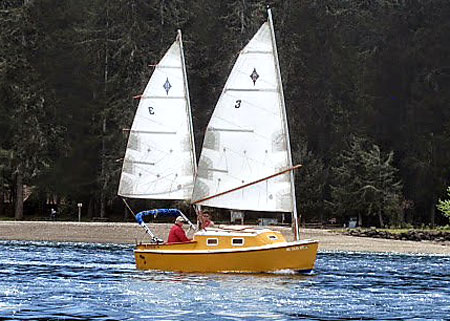
Year Built:
2006Owner:
Randall JonesDesigner:
Graham ByrnesDesign:
Belhaven 19Type:
KetchClementine was the first “Belhaven 19” to be built back in 2006. She was discovered by her current owner for sale in North Carolina in... -
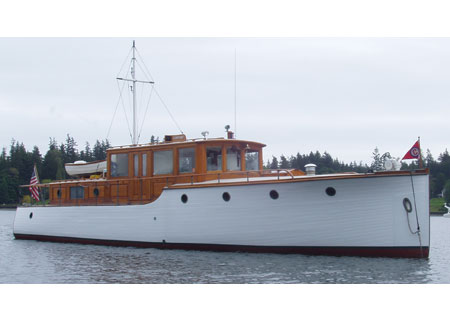
Year Built:
1929Owner:
Rick RandallDesigner:
Stephens BrothersDesign:
Stephens 43Type:
PowerCompadre is a 43-foot bridge-deck cruiser built in 1929. She is one of three yachts built to this basic design by Stevens Brothers in Stockton,... -

Year Built:
1926Owner:
Robert & Sally BryanDesigner:
CoolidgeDesign:
One-offType:
PowerIn 2011 “Corsair II” was visited by Frank Jacobs, the original owner’s grandnephew. He shared stories of adventures in the 1920’s. We learned that she... -
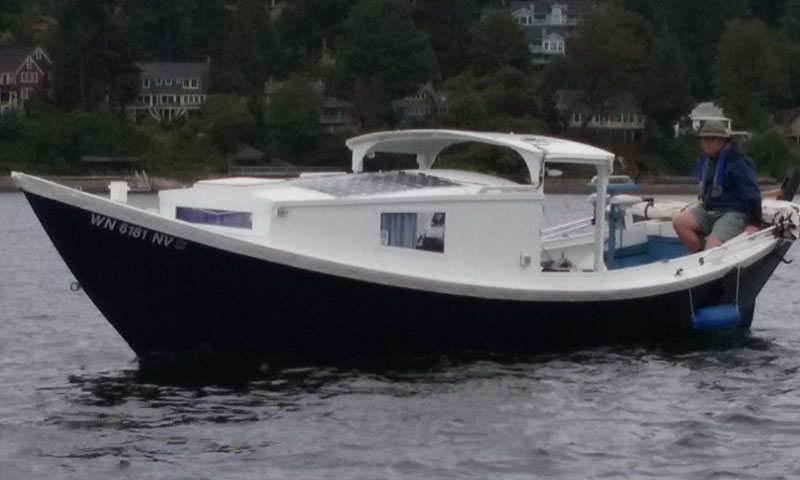
Year Built:
2013Owner:
Thomas HrubyDesigner:
Lucky PierreDesign:
Glen-LType:
Electric solarI built my first St. Pierre Dory 21 years ago and decided to go all electric when I found out they needed to be heavily... -
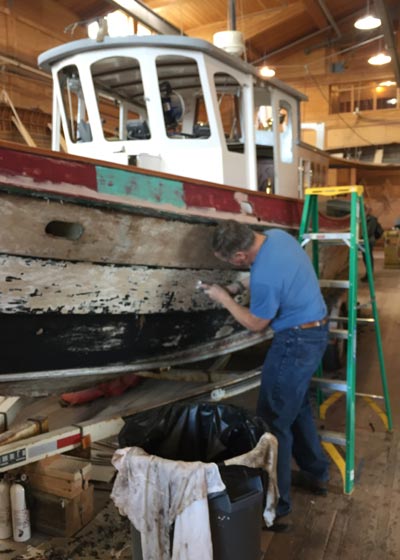
Year Built:
1986Owner:
Jean BrittinghamDesigner:
UnknownDesign:
One-offType:
PowerThis sweet custom Tugboat was built on a Clipper Craft dory body built in Portland, OR in 1986. She fell into our lap as another... -
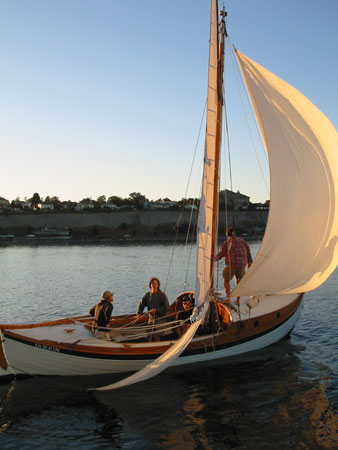
Year Built:
1905Owner:
Northwest Maritime CenterDesigner:
UnknownDesign:
UnknownType:
SloopBuilt for the U.S. Lifesaving Service, her design and hull shape are similar to the lifeboats used in Shackleton’s epic voyage. In 1937 she sailed... -
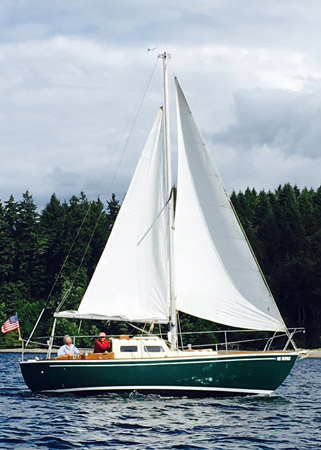
Year Built:
1987Owner:
Tom TallmanDesigner:
Build-a-Boat Plans of Sydney, AustraliaDesign:
Graduate 25Type:
SloopThis is the Graduate 25, design #712, from the Build-a-Boat Plans catalog from Sydney, Australia. It was built near Portland, Oregon at Heydon Island on... -
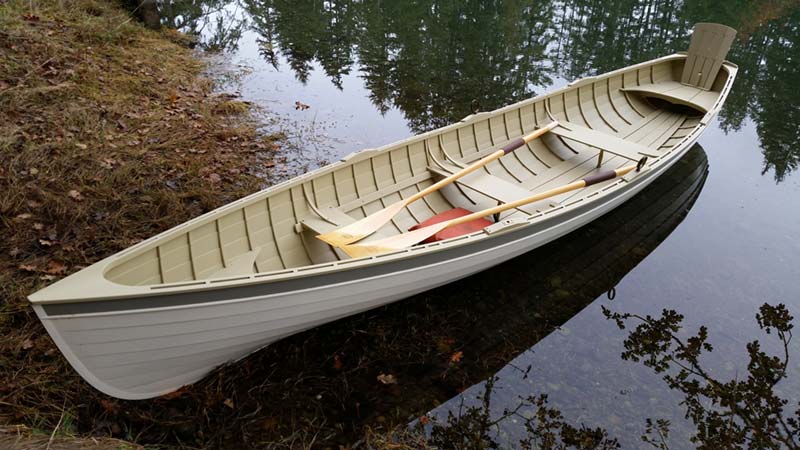
Year Built:
2015Owner:
Tom ReganDesigner:
Grapeview Point Boat WorksDesign:
Lake George BoatType:
Row“Ebb” is a glued lapstrake varient of the 1911 Lake George Boat “Winona” which is in the Mystic Seaport collection. The Lake George Boats were... -
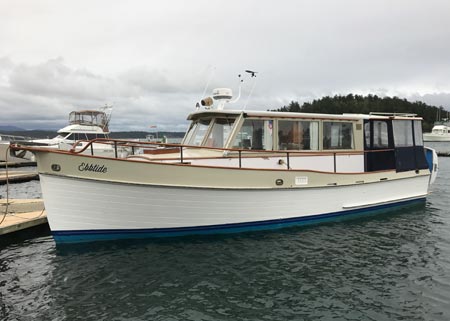
Year Built:
1972Owner:
Bob CoferDesigner:
Ken SmithDesign:
Grand Banks 32Type:
PowerA 32′ customized for Puget Sound cruising. Flybridge removed and a new roof built in its place, mast and boom removed, solar panels installed on... -

Year Built:
UnknownOwner:
Northwest Maritime CenterDesigner:
Northwest Maritime CenterType:
Row -
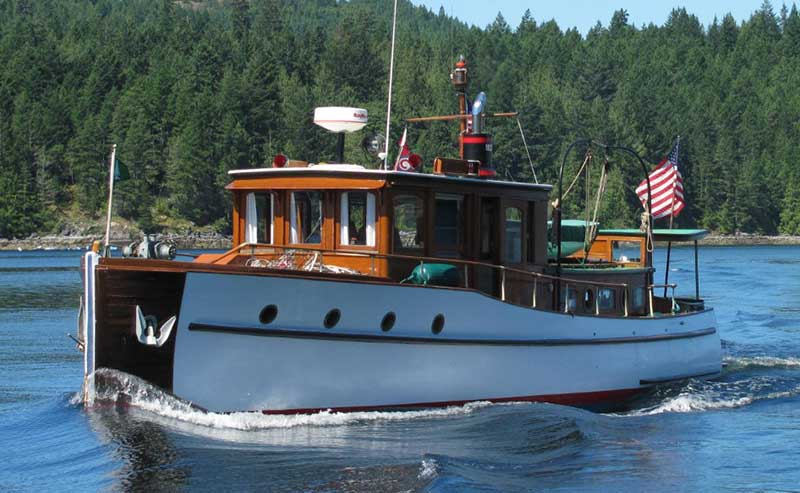
Year Built:
1927Owner:
James PoirsonDesigner:
Thearle and NordstropDesign:
One-offType:
PowerFrom Pacific Motor Boat magazine, January 1928 “El Mistico”, a 44-Footer with Diesel Power. The application of the low powered oil engine to the propulsion...
